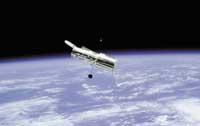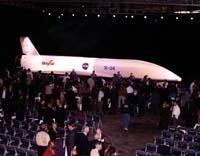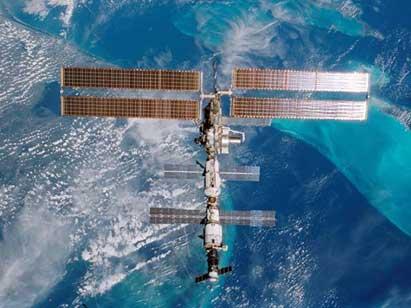Accident of Columbia
2003/02/04 Carton Virto, Eider - Elhuyar Zientzia

Space Ferries
are subjected to strong friction and heat every time they descend from space and enter the atmosphere. Resist temperatures of about 10 minutes or 1,650°C. Therefore, they are well protected to prevent their destruction.Ferries have two types of material. Areas most affected by friction, container ends and wings are protected by carbon-reinforced resins. This material is covered by a layer of silicon carbide able to withstand 1650ºC without undo.
Other parts withstand lower temperatures and are coated with silicon fibre plates. The plates are synthesized as ceramic materials and have an enormous heat dissipation capacity; they can be extracted from the oven at the height of a second and collected in the hands. But at the same time they are very porous and do not have much weight. Therefore, they are very suitable for use in space.
In recent years the addition of boron has allowed synthesizing better materials, replacing silicon plates in certain areas of ferries with other silicon, but in general, silicon plates are still used to protect the body from packaging.
The plates mentioned these days are among the most robust, that is, of carbon-reinforced resin. It seems that when the ferry threw into space something hit the left side and now it is believed that the blow caused the detachment or deterioration of some plate. As a result, when entering the atmosphere, it is said that the area heated too much and caused an accident.
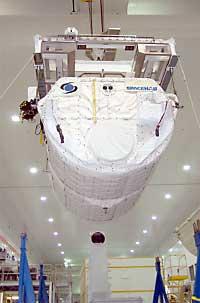
The day after NASA went out into space, he realized that something had fallen from the fuel tank, watching the launch videos, but tests were done and concluded that the boat was fine. The accident has focused on the event. NASA investigates the data obtained before the collection and destruction of parts of the vessel. At the moment they have not said anything clear.
Oldest ferry
However, the fall of plates is not the only hypothesis that has been discussed these days. Columbia was NASA's oldest ferry, 22,
and some believe it was too old. Although at the end of each trip all the plates of the boat are checked and the deteriorated ones are modified, some experts believe that the material was ‘exhausted’.
Columbia has made a total of 28 trips, but very few since 1999. That year they made several innovations and since then only spaced last year. This trip was the second after its renovation and was scheduled for July 2002. At that time, however, cracks were discovered on all ferries and flights were delayed.
Despite their appearance, ferries are not a new invention. NASA built in 1980 containers that could be used again and again and that, despite the great revolution it suffered, the intention was to go further.
The ferries would be used for a decade and in the meantime they would develop safer and cheaper boats. In 1994 NASA launched the Advanced Transport Program to develop technology ten times cheaper and safer than that. The
new vehicles were called X-33, X-34, X-37 and X-38, but after wasting a billion dollars, the vehicles were too expensive and abandoned the project two years ago. They announced that they would start looking for another strategy and, in the meantime, would continue with ferries, if possible from 2020.
It is clear that NASA is not going through the golden age. The US government has greatly reduced its budgets in recent years and, in line with the accident, more than one has claimed that the shortage of money had led to a reduction in security measures.
In April last year, flight security experts denounced NASA's actions in the US Congress. It was then said that security was not being veiled. In ten years the budget for ferries has been reduced by 40%, so it was considered that NASA has reduced the quality of work.
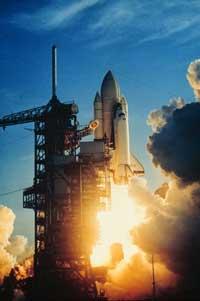
NASA fired five out of nine members of this group at the time of criticism to accommodate younger people.
But between criticism and criticism, NASA has received some joyful news these days, because President Bush announced that it will
increase NASA budgets by 3%. NASA and ferries will have €14.5 billion for the next year, €3.826 million instead of €3.210 million.
International Space Station
In recent times, NASA's budget problems had also questioned the International Space Station project, as they were not the only ones dedicated to the 'scarcity' of money.
In September last year the Russians reported that Soyuz was without money to build more ships, and that if he did not get to work immediately, in 2004 the astronauts would not travel to the station. Immediately after the complaint, they were given money, so it seems that things have improved, even though the initial goals of the station will hardly be met.
Interesting websites:
NASA
NASA Human Spaceflight
Space Transportation System
Spaceflightnow

Gai honi buruzko eduki gehiago
Elhuyarrek garatutako teknologia



